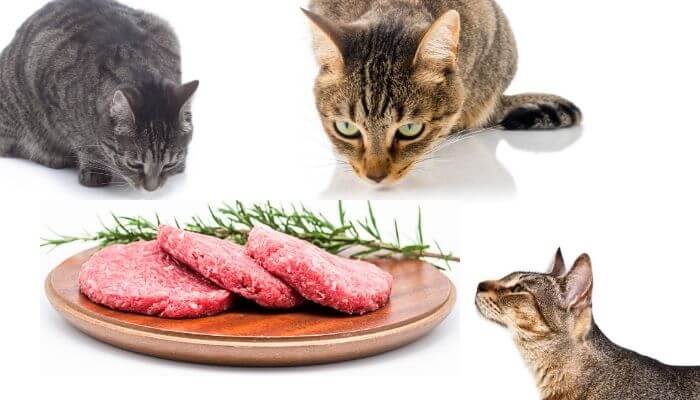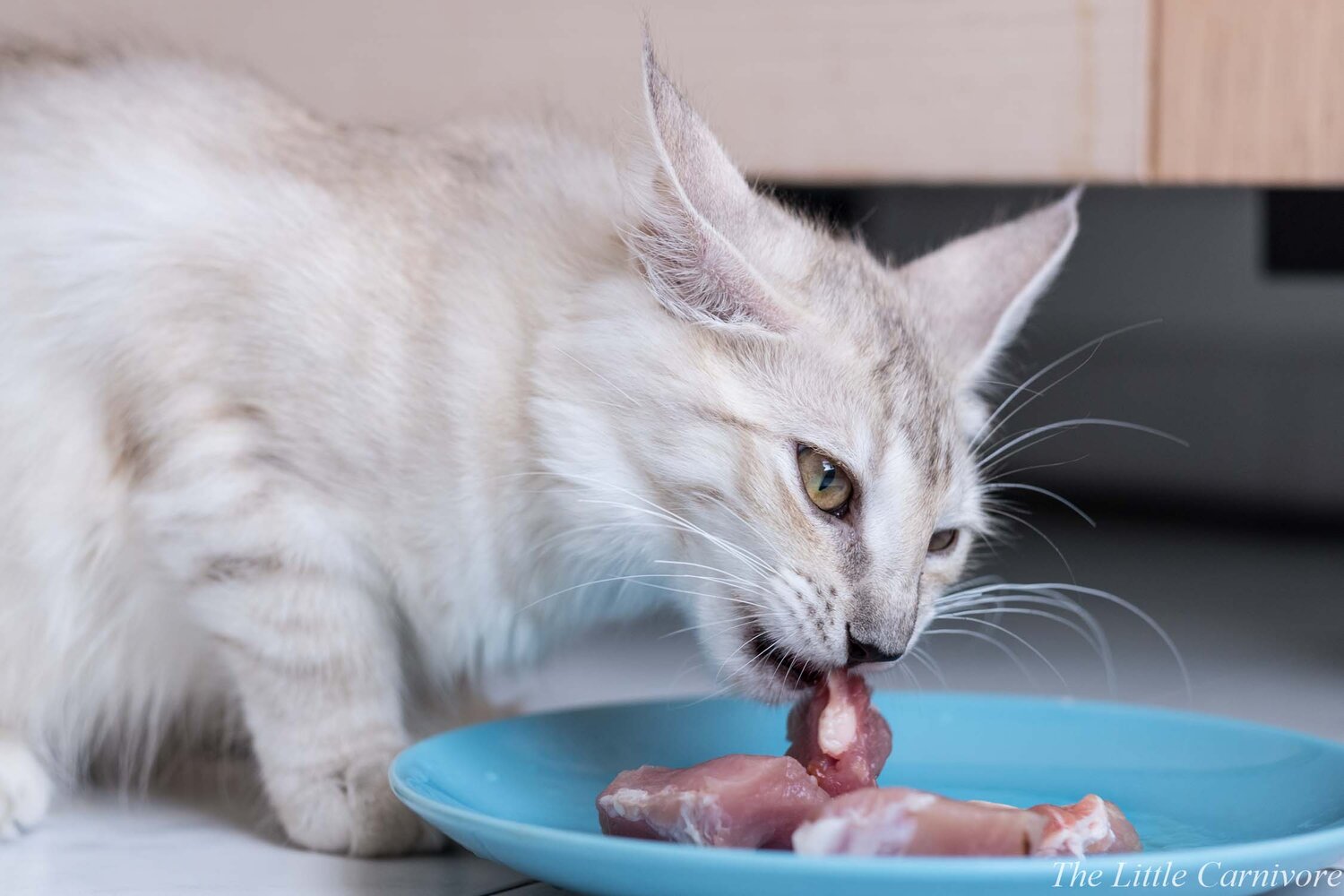Young cats have a high demand for energy, high-quality protein and nutrients. Kittens also need a lot more fluids than adult cats. Raw food for kittens provides your little cat with beneficial fats as an energy source, highly digestible proteins, important nutrients and sufficient fluids.
Raw feeding is ideal, especially for young kittens. Since a raw diet is always based on your cat’s individual needs, raw food for kittens naturally differs in many ways from raw food for older cats.
One of the UK’s leading raw food for pets retailers, Belle & Duke, provides a good page on this if you’d like information from the raw food sector.

Getting Kittens Started On Raw Food
Small cats can eat pureed meat porridge from the fourth week, directly after finishing their mother’s milk. From eight weeks on, you can try small pieces of raw meat. Your little four-legged friends will be chewing quite vigorously by then.
As a rule, however, kittens are generally 12 to 14 weeks old when they move in with new owners. If they’ve not had any raw meat by then, they’ll likely already be used to other solid foods. You should keep a small supply of this food that they’re used to. That’ll help your cat settle in safely with its new family and to help it get used to eating raw meat.
How To Transition A Kitten To Raw Food
It’s best to gradually switch to raw food for kittens to adjust their digestion. After a week or two, start replacing your new friend’s morning meal with raw meat.
Ready-made cat food and raw meat have different retention times in the gastrointestinal tract. If both are mixed in one meal, it can unnecessarily strain young cats’ sensitive digestion system.
After a few days, you can replace a second meal and later a third meal with raw food – until finally, all daily meals are raw.
Your young cat will usually accept meat cut into small pieces. If he doesn’t, heat the meat slightly or fry it gently. The warmth creates a more intensive smell and taste, improving the likelihood of accepting it.
Oils or fats can also help to improve taste even more. By trying out different types of meat, you will quickly find out which variety your kitten likes and tolerates best.
Raw Food Gives Kittens Energy
Up to about one year, you should let kittens eat as much as possible. Not until about twelve months do cats develop the potential to become overweight. As the growth curve rises, small cats develop a particularly large appetite between seven and ten months of age.
A kitten’s growth is complete at about one year old, although that’s a general rule since it depends on the breed. At that time, divide the daily meals into as many small portions as possible. Don’t forget that resh meat should never be taken cold from the refrigerator but always warm to the touch.
In contrast to adult cats, kittens need more energy in their food due to their growth spurts and high activity. So fat-rich meats such as duck, marbled beef or lamb are especially suitable for feeding kittens.
Another important aspect of kitten nutrition is sufficient calcium. An alternative to pure calcium supplements can be the administration of ground bone or bone meal.

How Much Raw Food To Give Kittens
At 12 weeks, kittens should be fed four to five times daily. Their need for energy, protein and nutrients is very high due to their rapid growth, so they need to eat a large amount. At the same time, however, kittens’ small stomachs mustn’t be put under too much strain. The best way to ensure their stomachs are fine is to divide raw food into several meals per day.
What Types Of Raw Meat To Give A Kitten
As a rule, young cats can be introduced to raw food very quickly and easily. Unlike older cats, they are not yet used to the flavours of industrially produced food. Feel free to try out which types of raw meat your little cat likes best.
Easily digestible muscle meat and ground meat are excellent for raw food in kittens and provide high-quality protein. Meats with higher fat content are ideal, such as pure salmon or lamb.
The Natural Choice
So as long as you choose the right meats and do the process properly, there’s no reason why your kitten shouldn’t enjoy raw food. After all, aren’t we as humans on a journey to try and eat more natural food? All the chemicals in processed food can hardly be good for us.
The same goes for our feline friends, who have had to put up with food filled with preservatives and other unnecessary agents.
We’re all on a mission to eat more natural food. Let’s take our kittens with us on that journey.
